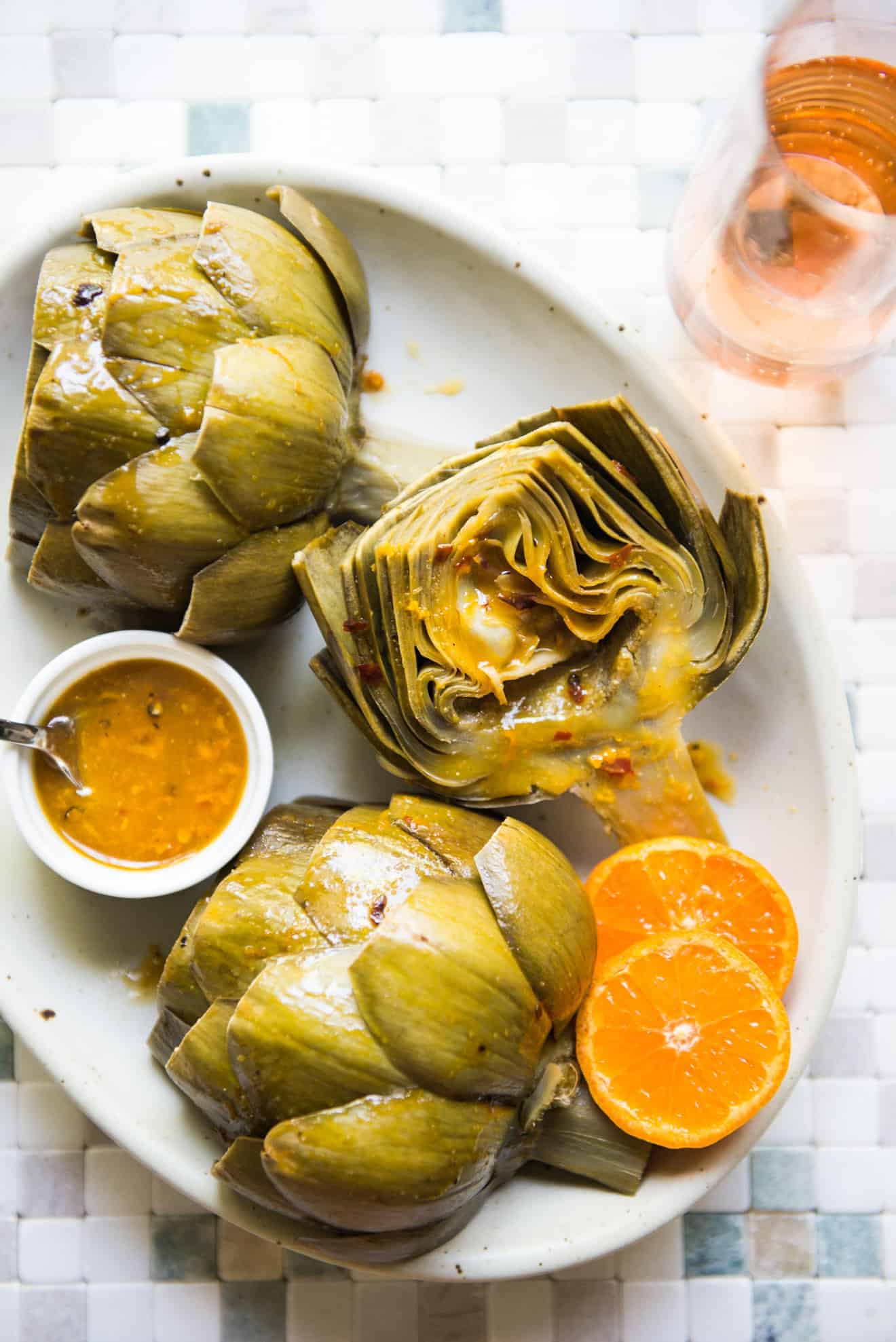
Thank you Safeway for sponsoring this post!
The first time I ever really thought about artichokes was my freshman year of college, when I was meeting people in the dorms. One of my now good friends from college grew up in Castroville, and I had never heard of the town. He went on to say that Castroville was the artichoke capital of the world and that it hosted an annual artichoke festival. I thought to myself, “Artichokes?? Interesting.” Little did I know that over 10 years later, artichokes would become one of my favorite vegetables and that I would visit an artichoke farm based in Castroville!
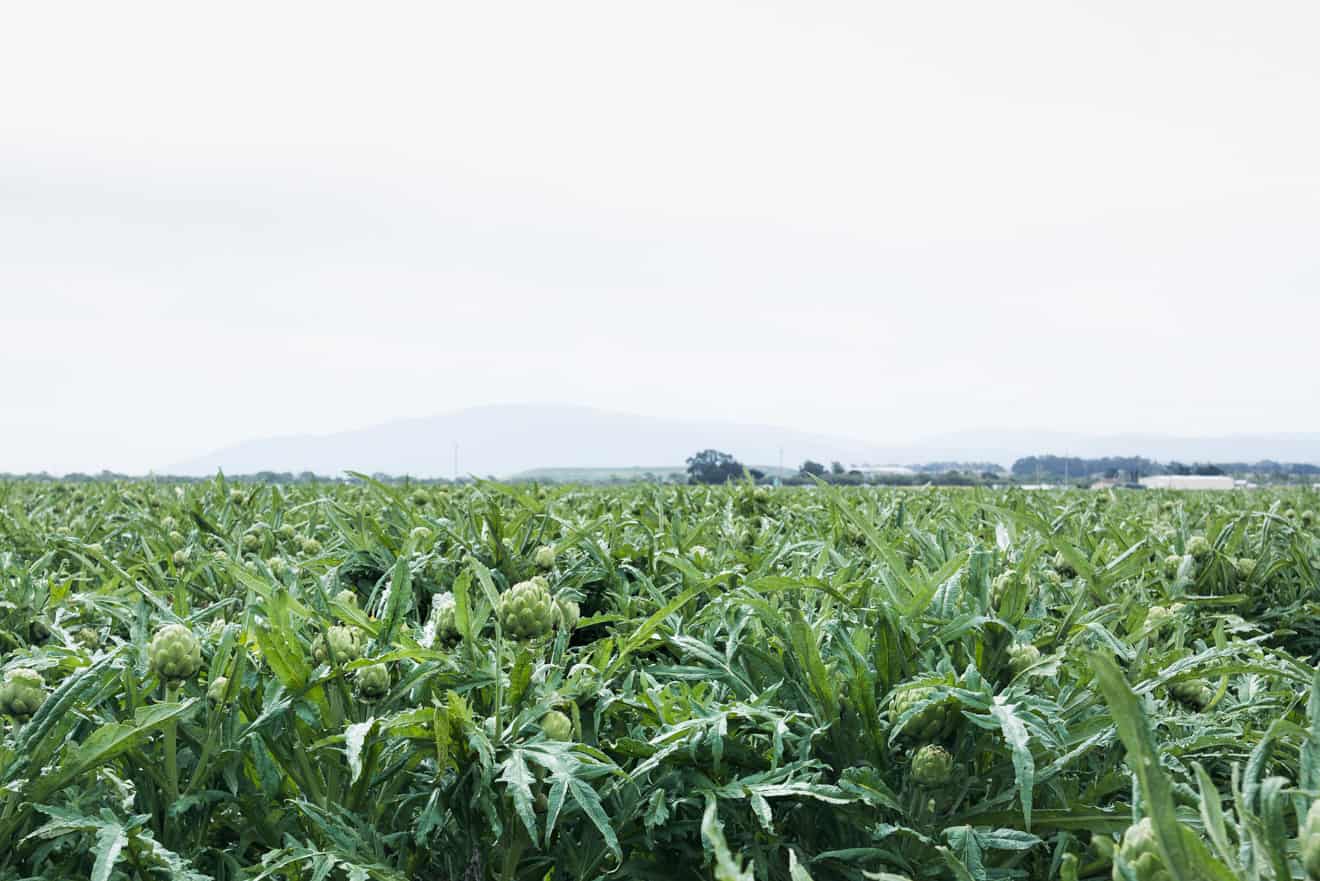
Throughout the year, I have been and will continue to participate in several blogger tours and events with Safeway to learn more about their Northern California-based vendors. Our first tour included a visit to Ocean Mist Farms, the largest grower of artichokes in the U.S. I had never seen artichoke plants before the farm tour. When we arrived at Ocean Mist Farms, I was blown away by the vast fields of green plants with artichoke buds peeking through the top.
The artichokes are hand harvested and packed right on the field to retain their freshness. Farm workers walk up and down the fields, cutting off artichokes from the stalk. Then, they’ll toss the artichokes into canastas, or large lightweight baskets, that they carry on their backs. It wasn’t until I witnessed this harvesting process that I fully realized how much labor goes into producing artichokes. It made me appreciate all the hard work that the farming community does in order to produce the fruits and vegetables that I find at the grocery store.
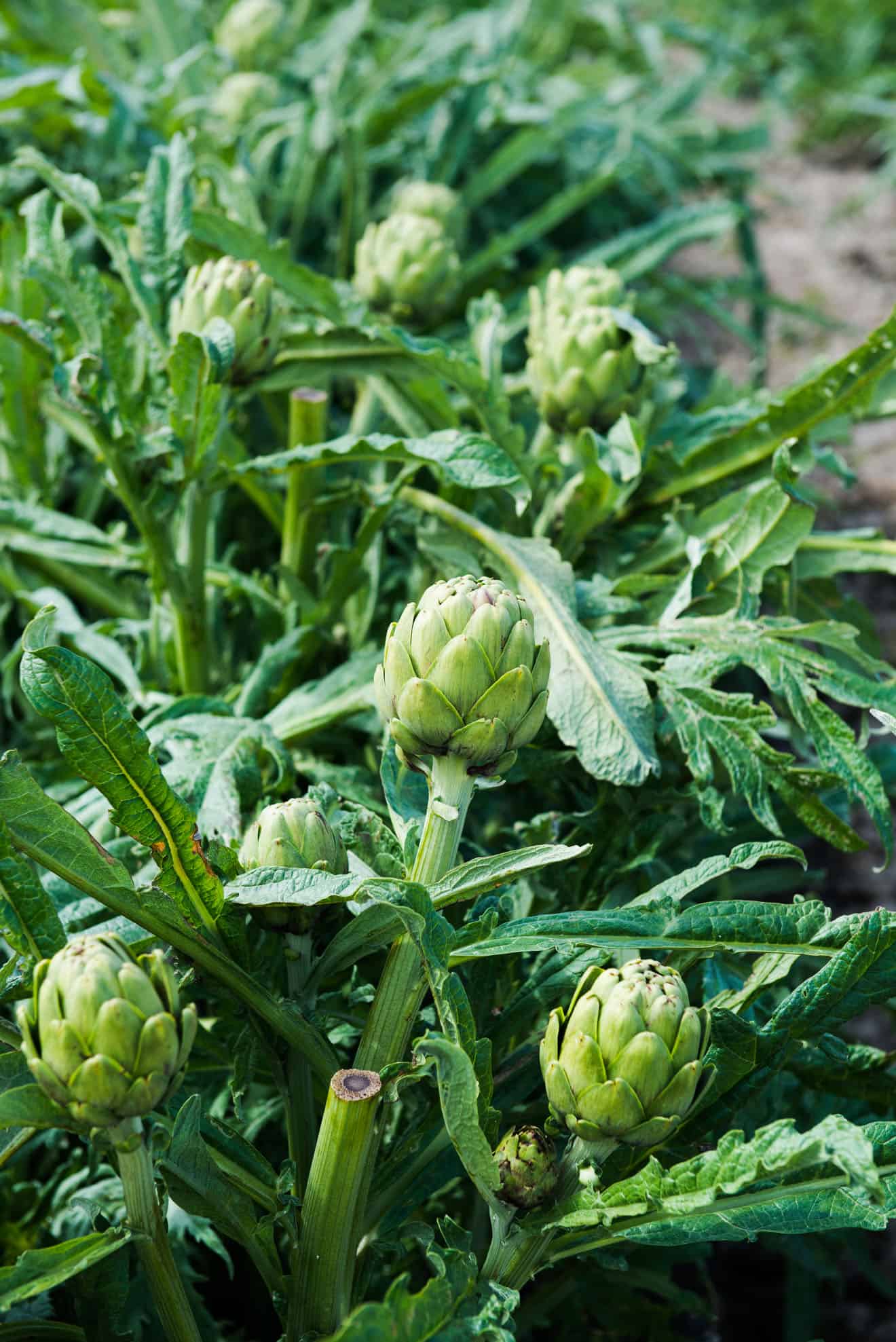
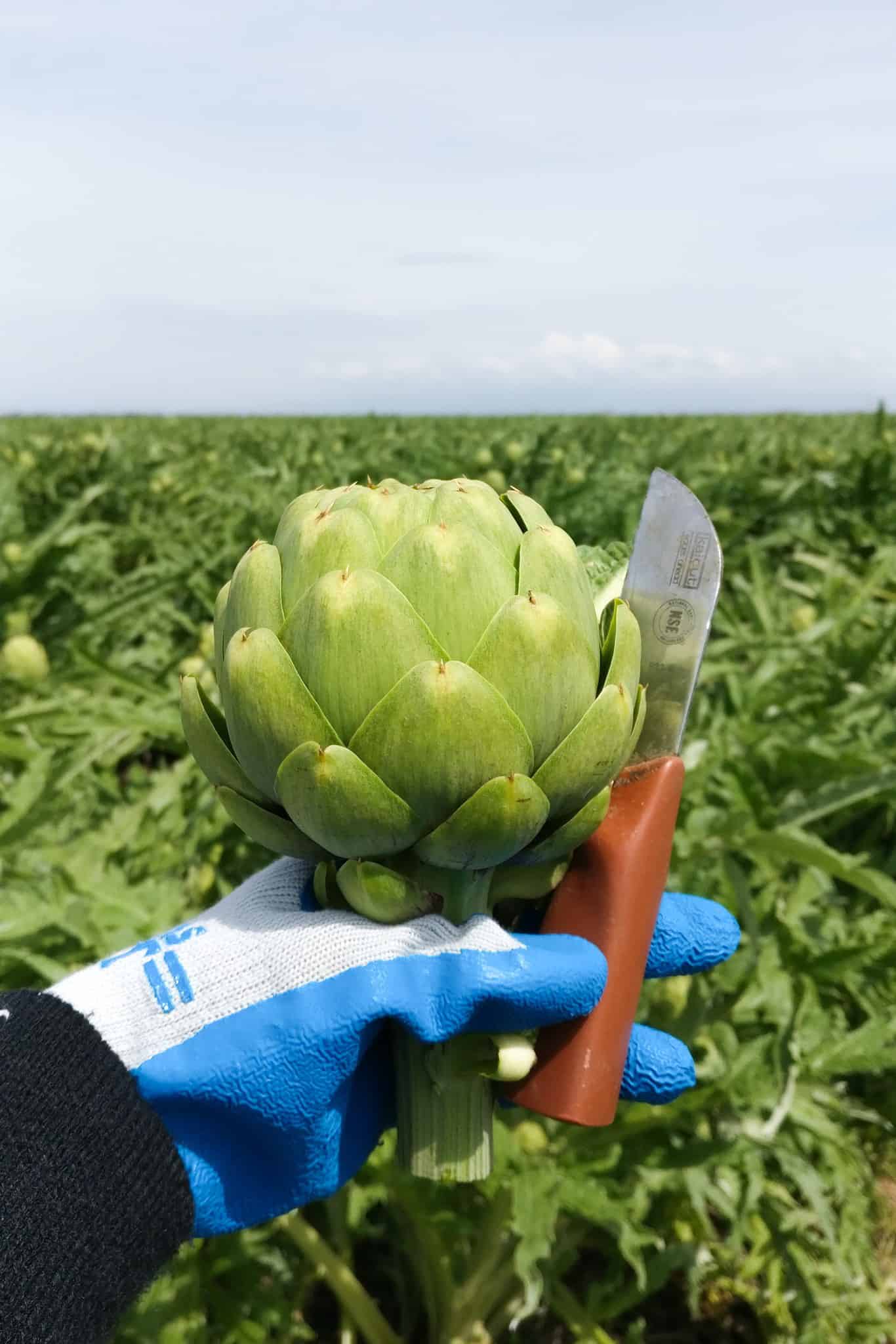
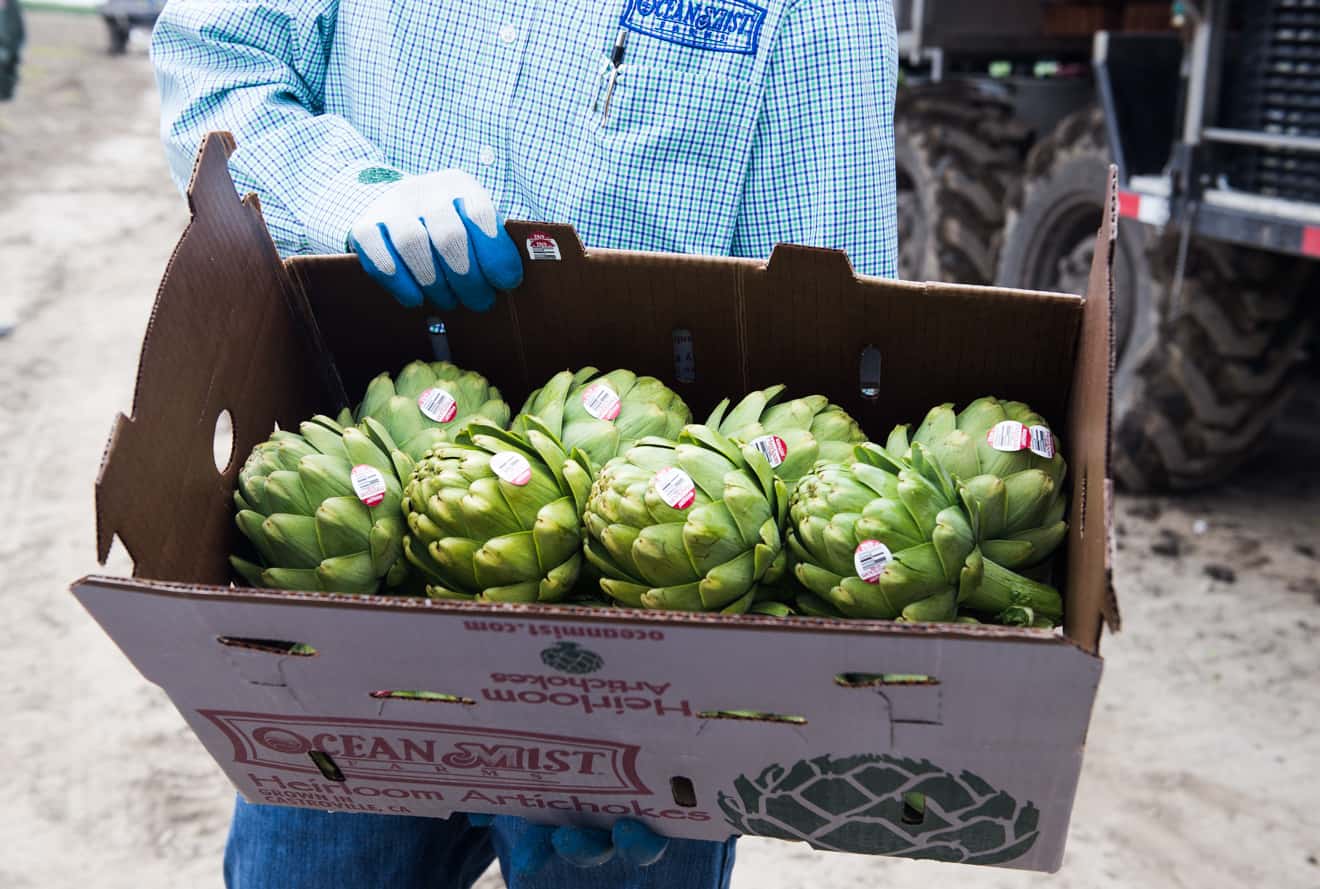
Another thing I learned during the tour was that each artichoke plant has one primary stalk, which produces the largest artichokes we see on the market. Shooting off of the primary stalk are secondary and tertiary stalks, which produce medium-sized and baby artichokes, respectively. Canned artichokes usually come from tertiary stalks. Artichokes also have a lot of antioxidants, and a medium bud can contain up to 6 grams of fiber!
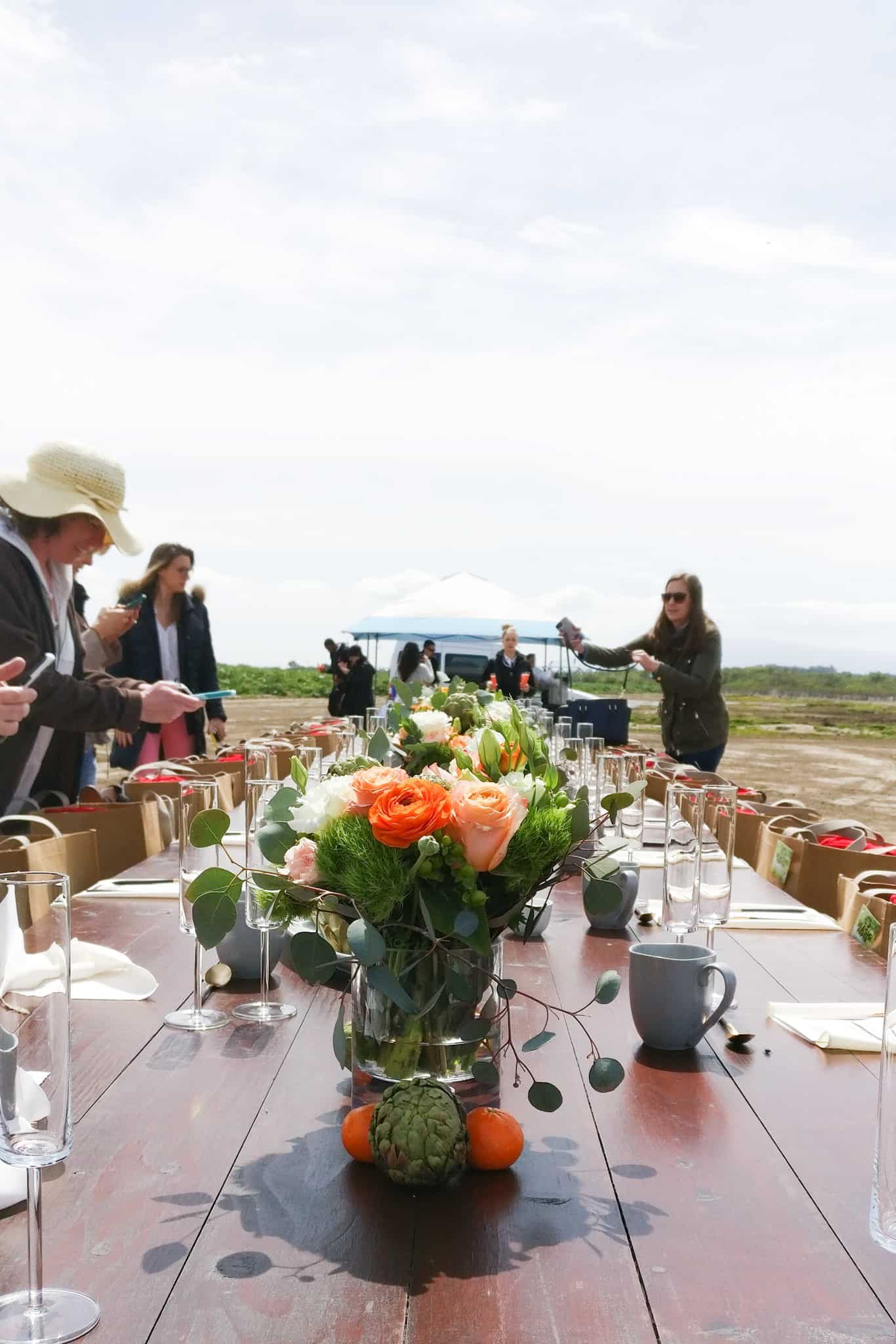
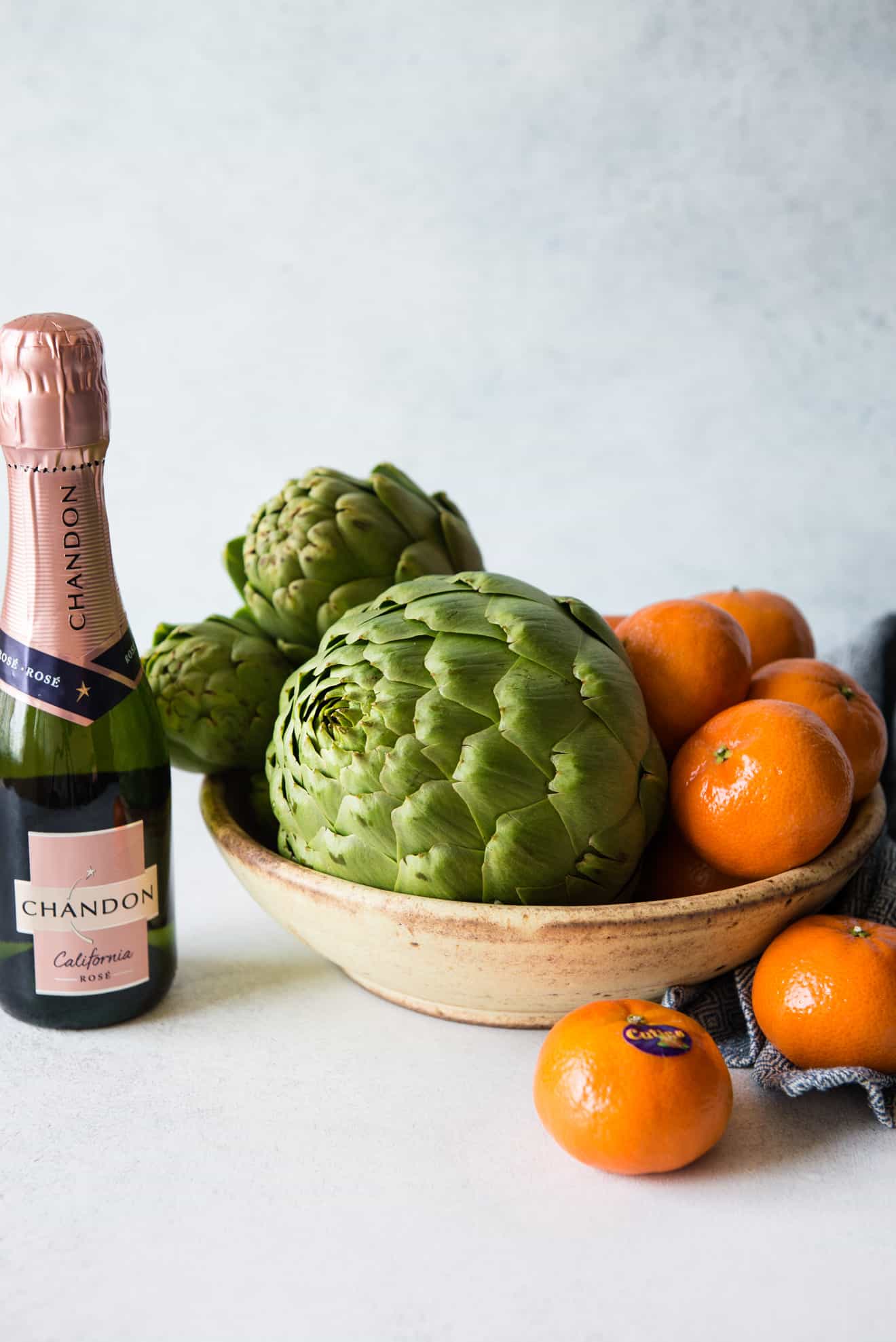
Towards the end of the tour, Safeway treated all of us to a catered lunch in the artichoke fields. The lunch featured dishes made from a selection of Ocean Mist Farms produce, Sun Pacific Cuties, and Safeway O Organics, as well as bubbles from Chandon. It was a beautiful meal, and we all got goodie bags filled with artichokes, Cuties, and some sparkling rosé to inspire our next recipes.
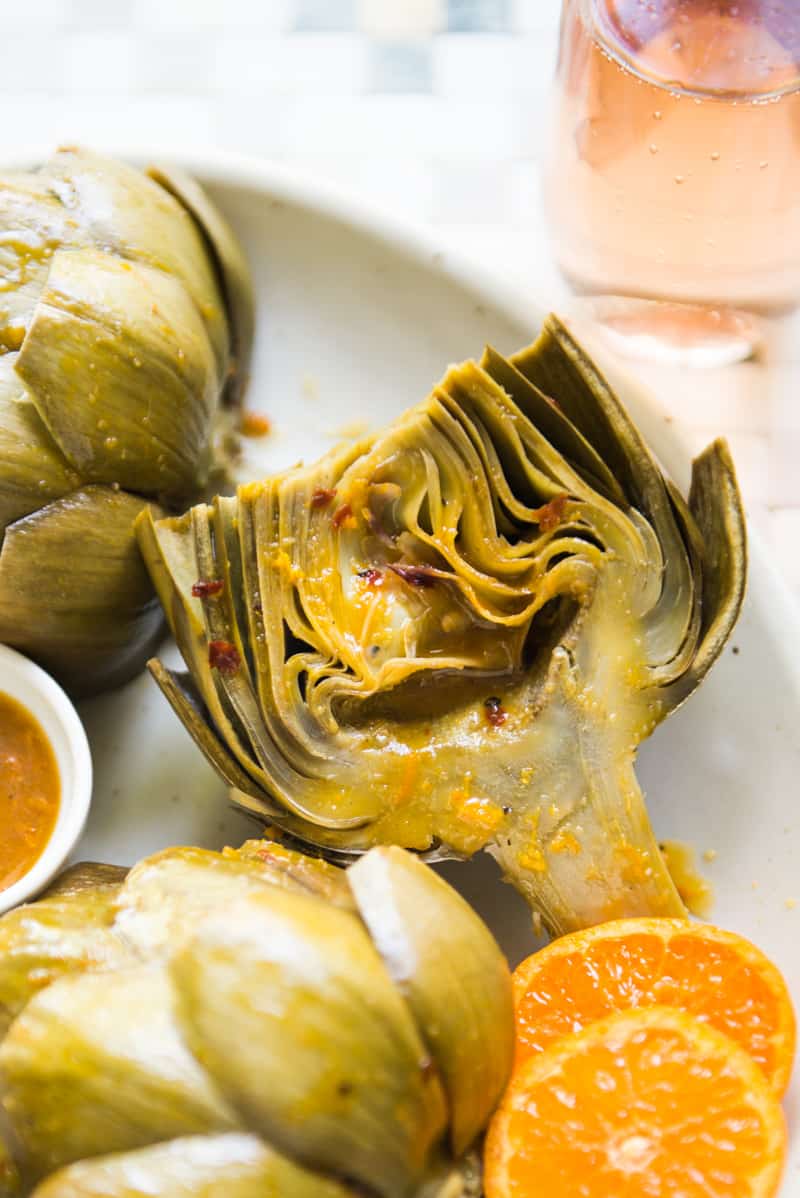
I didn’t grow up eating artichokes, so for the longest time, I was intimidated by the thought of cooking them. Having cooked them for a few years now, I realized that the preparation is not as daunting as I once thought. There’s just a few things that you need to keep in mind when cooking artichokes.
PREPARING THE BRAISED ARTICHOKES
- Cut off the top portion of the artichoke: There is virtually no flesh on the tips of the leaves at the top, so trim off the top 1/4 or 1/3 of the artichoke.
- Use scissors to trim off thorns: After removing the tops of the artichokes, use kitchen shears to cut off the tips of all the remaining leaves. There’s often prickly thorns on the tops of the leaves, especially when you’re working with larger artichokes.
- Peel the skin off the stem: Using a paring knife or peeler, peel off the outer skin of the stem. The inner portion of the stem is edible but the outer skin is bitter, so peel it off.
- Remove the choke: Slice the artichoke in half and remove the fuzzy portion of the artichoke, also known as the “choke.” If you are working with larger artichokes, the leaves (often purple in color) in the center may be very thorny. I usually cut off those thorny leaves as well. They don’t soften completely once cooked.
- Coat opened artichokes with lemon juice: Much like potatoes and apples, artichokes oxidize very quickly once you slice them open. Covering the stem and cut side of the artichoke with lemon juice will keep it from browning.
For this recipe, I paired braised artichokes with a mandarin chili sauce made with the juice from the Cuties. The sweet citrus flavor of the Cuties paired with the heat from the chili flakes made a wonderful sauce and dip for the artichokes. Honestly, I ate all the artichokes you see in the photos in one sitting. Sipping on a glass of Chandon sparkling rosé was just the perfect touch for my weeknight dinner.
Braised Artichokes with Mandarin Chili Sauce
Ingredients
- water for soaking the artichokes
- 3 large lemons, sliced into wedges
- 2 medium artichokes
- 2 tablespoons olive oil
- 1 1/2 cups vegetable broth
- 6 tablespoons freshly squeezed mandarin orange juice
- zest from 1 mandarin orange
- 1 tablespoon rice vinegar, apple cider vinegar works also
- 1 tablespoon sugar
- 1/2 teaspoon salt
- 1/2 teaspoon red pepper flakes
- 1/4 teaspoon garlic powder
- 1/8 teaspoon ground black pepper
- 3/4 teaspoon cornstarch
- 1 tablespoon water
Instructions
- Fill a large bowl with cold water. Squeeze the juice of 1 lemon into the bowl of water and toss the squeezed lemon wedges into the bowl of water. Set the bowl aside.
- If your artichoke comes with the stems attached, trim the stem so that you have about 1 1/2 inches of stem remaining. Peel off any small leaves on the stem and around the base of the artichoke. With a paring knife or vegetable peeler, peel off the outer skin of the stem. Squeeze lemon juice on the stem and rub it around.
- Using a sharp knife, cut off the top 1/3 portion of an artichoke. Then, using kitchen shears, trim off the tips of the remaining leaves to remove the thorns. Squeeze the juice from a lemon wedge over the cut side to keep the artichoke from browning.
- Place the artichoke on the cutting board, cut side down, so that the stem is sticking up. Slice the artichoke down the middle. Squeeze lemon juice all over each half. You can also rub the lemon wedges on the artichokes.
- Use a knife or spoon to scoop out the fuzzy choke. Be careful because the leaves right above the choke may be thorny. If they are, use kitchen shears to cut them off. Squeeze more lemon juice into the cavity where the choke once was. Place the artichokes into the bowl of water. Repeat with the other artichoke.
- Heat a large pan with the olive oil over medium-high heat. When the pan is hot, add the artichokes to the pan, cut side down. Cook the artichokes for about 3 to 4 minutes. Pour the vegetable broth into the pan. There should be enough broth in the pan so that it goes up the sides of the artichoke by about 1/2 inch.
- Bring the broth to boil, then reduce the heat to a low simmer. Cover the pan with a lid and let the artichokes cook for 20 to 25 minutes. The artichokes are done when a knife easily slices down the base of the artichoke, an indication that the artichoke heart is tender. Transfer the artichokes to a plate.
- Pour the broth into a bowl. Return 1/3 cup of broth to the pan. Add the mandarin orange juice, mandarin orange zest, rice vinegar, sugar, salt, red pepper flakes, garlic powder, and black pepper to the pan. Stir to combine the ingredients. Heat the sauce over medium-high heat. Once the liquids start to boil, mix 1/2 teaspoon of cornstarch and water in a small bowl. Pour the slurry into the pan and stir. The cornstarch helps thicken the sauce. Let the sauce cook for another 1 to 2 minutes and turn off the heat.
- Drizzle some of the sauce over the artichokes and save the rest for dipping.
- The tender flesh on the insides of the artichoke are edible! The outermost leaves of the artichoke aren’t too fleshy, so you may have to peel off one or two layers of artichoke leaves before you reach the fleshier ones. Use your teeth to scrape off the flesh from the leaves. Dip the leaves in the mandarin chili sauce for more flavor.
Disclaimer: This post is sponsored by Safeway. You can find all the ingredients for this recipe at your local Safeway or purchase them through Safeway Home Delivery (powered by Instacart).

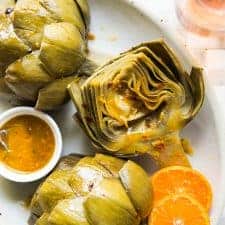

Barbara says
Love this recipe, what would you recommend serving it with?
Lisa Lin says
Hi, Barbara! I’ve been eating it with pasta/grain salads or a simple rice dish with scallops or shrimp on the side. Hope this helps!
Miranda says
This looks amazing!!! How spicy is the chili sauce?
Lisa Lin says
To me, it’s not overwhelmingly spicy, especially if you don’t scoop out too much of the pepper flakes that have settled at the bottom.